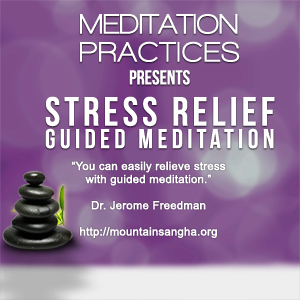While researching the ideas of guided meditation and mental fitness, I came across an article on the Psychology Today website called, “Three Keys to Optimum Mental Fitness: How to exercise your psychological muscles” by Clifford Lazarus, Ph. D.
The article begins with some wisdom that I try to instill on my students:
Most people know the importance of regular physical exercise. Few people know, however, that proper psychological [and mental] fitness training is also very important for overall health and optimum well-being.
Indeed, just as stretching, cardio and strength training are the three foundation stones of physical fitness (along with adequate sleep and healthy nutrition, of course) there are also three crucial components of psychological or emotional fitness, namely affirmation, visualization, and relaxation.
These, in fact, are the three keys to optimal mental fitness as well as the three keys for guided meditation!
Guided Meditation And Mental Fitness
Dr. Lazarus wrote briefly about each of these steps. I would organize them in a different sequence.
The first key for active visualization is relaxation. For relaxation, he wrote,
Relaxation: Various forms of relaxation training have been used for centuries as a way for people to gain control (and even mastery) of many of their physical systems such as reducing arousal in their nervous system and calming tension in their muscles.

China Cove – Point Lobos: The most relaxing place on the west coast!
I couldn’t agree more with what he said. I will tell you that the active visualization process that I teach is so relaxing that 98% of my students come very close to falling asleep. While they are in that zone between being awake and being asleep, they often have experiences that change their lives for the better.
They report back to me that they almost fell asleep, and they were so interested in the process that they wanted to remain awake.
The relaxation process that I teach involves breathing deeply, withdrawing inward, visualizing a relaxing scene, scanning the body, and a relaxing count down. It has worked 100% of the time.
The second key is visualization. Dr. Lazarus wrote:
Visualization: In essence, visualization activates the non-dominant or “right brain” in most people thus exercising important neural structures that further enhance optimism, confidence, and personal effectiveness.
In my process, I use visualization in two ways. The first way, as stated above, is to help trigger relaxation. I guide you to a relaxing scene of a place you have been before or to place you would like to visit.
The second way I use visualization is to have you imagine yourself being, doing or having the object of your desire. You are guided to image anything that pleases you.
It turns out that the brain cannot tell the difference between the real object of your desire and your image of it. This is how athletes rehearse their performances prior to going out on the field or on the court.
The third key is desire. This relates to the goal that you want to achieve in your session and also to Dr. Lazarus’ idea of affirmation:
Affirmation: Basically, affirmation involves self-talk and thus recruits the dominant cerebral hemisphere (the so called “left brain” in most, right-handed people). Simply stating to yourself certain positive messages actually activates specific neural pathways that when strengthened tend to promote self-esteem and well-being.
By stating your desire in the form of an affirmation, you will be able to allow an image to form that represents your desire. Napoleon Hill once stated,
Whatever the mind can conceive and believe, the mind can achieve.
He was referring to the process of achieving your goals, which is the object of guided meditation recording.
The guided mediation process consists of seven easy to follow steps which you will learn in the instructions.
I am confident that you will benefit from this process. Many already have.
Click on the image below to learn more about guided meditation and mental fitness.














What is the effect of meditation on fitness? Can you provide a more information on about meditation and fitness?
Like physical fitness, you need to exercise you brain with meditation like a muscle. Just as with physical exercise your strength can diminish if you don’t keep it up, the concentration and focus you develop in meditation can also diminish.